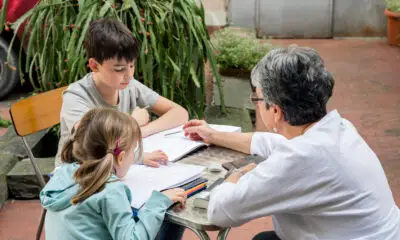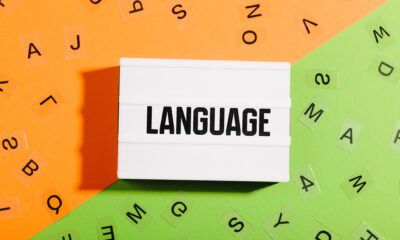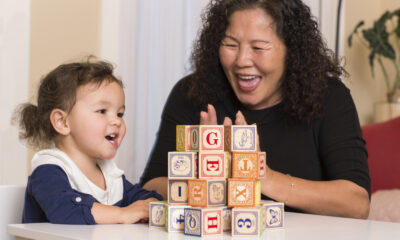Geometry
How Geometry Shapes the World Around Us

When most people think about geometry, they picture protractors, triangles, and complicated formulas scribbled across math worksheets. But geometry is much more than a school subject—it’s the language of shapes, patterns, and space that helps us understand and navigate the world.
From the design of your favorite smartphone to the structure of a honeybee’s hive, geometry shapes the world around us in ways both obvious and hidden. At TutorConnectPro, we believe that when students see how geometry connects to the real world, it becomes more than just memorizing theorems—it becomes meaningful.
In this post, we’ll explore how geometry influences everyday life, where its principles appear in nature, art, and engineering, and how understanding these connections can deepen a student’s appreciation for math.
What Is Geometry?
At its core, geometry is the study of shapes, sizes, positions, and the relationships between objects in space. It explores points, lines, angles, surfaces, and solids—and how these elements interact with one another.
Geometry dates back to ancient civilizations like the Egyptians and Greeks, who used it to measure land, build monuments, and study the stars. Over time, geometry has become one of the fundamental branches of mathematics, providing the framework for many fields of science, technology, and design.
Why Geometry Is More Than Just Shapes
Although we often learn about geometry through drawings of triangles, circles, and polygons, the principles go far beyond the classroom. Geometry helps us:
- Understand spatial relationships (like where objects are located and how they move).
- Predict how structures will hold up under pressure or weight.
- Analyze patterns and symmetry in art, design, and nature.
- Solve real-world problems in construction, engineering, robotics, and even medicine.
Seeing these applications helps students understand why geometry matters—not just for passing a test, but for understanding the world.
Geometry in Nature: Patterns and Symmetry All Around Us
One of the most beautiful examples of geometry in action is in the natural world. Nature often follows geometric rules—sometimes with stunning precision.
Consider these examples:
- Hexagonal patterns in honeycombs: Bees instinctively use hexagons because they efficiently divide space with minimal material.
- Spiral patterns in shells and galaxies: These follow the Fibonacci sequence, a mathematical pattern closely linked to geometric growth.
- Symmetry in flowers, leaves, and animals: Many organisms exhibit bilateral symmetry (like butterflies) or radial symmetry (like starfish).
- Crystal structures in minerals: Molecules arrange themselves in repeating geometric patterns, forming beautiful crystalline shapes.
Understanding these natural patterns can make geometry feel less abstract and more connected to life.
Geometry in Architecture and Engineering
Geometry is the foundation of construction and design. Architects and engineers rely on geometric principles to create stable structures, efficient spaces, and visually appealing designs.
Some key applications include:
- Triangles in bridges: Triangles distribute weight evenly, making them ideal for strong frameworks.
- Circles and arches in buildings: Curved shapes like arches can support more weight than flat beams, a principle used since ancient Roman architecture.
- Golden ratio in design: The golden ratio (approximately 1.618) is used in architecture and art to create aesthetically pleasing proportions.
By studying geometry, students gain insight into how the world is built—from skyscrapers to stadiums.
Geometry in Art, Design, and Technology
Geometry isn’t confined to science and engineering—it plays a vital role in creative fields too.
Artists and designers use geometric concepts like:
- Perspective drawing: Using vanishing points and angles to create depth in two-dimensional art.
- Symmetry and tessellations: Repeating shapes without gaps or overlaps, seen in works by artist M.C. Escher and in Islamic art.
- Pixel grids and vectors in graphic design: Digital art relies on geometric grids and shapes to create images.
- 3D modeling and animation: Geometric algorithms power the design of video games, movies, and virtual environments.
These real-world uses help students appreciate how geometry brings creativity to life.
One List: How to Help Students See Geometry in Everyday Life
Parents and educators can make geometry more engaging by helping students recognize how it appears all around them. Here are some effective ways to do that:
- Look for shapes and symmetry in nature during walks or hikes—observe flowers, leaves, and animal patterns.
- Explore architecture in your community, pointing out arches, domes, triangles, and repeating patterns in buildings and bridges.
- Try hands-on geometry activities like building structures with toothpicks and marshmallows or drawing tessellations.
- Incorporate art projects that involve perspective drawing, symmetry, or mandala designs.
- Discuss the role of geometry in sports, such as the angles in pool, soccer field layouts, or the curves of a running track.
- Introduce simple design software that uses grids and shapes to create graphics or 3D models.
- Analyze packaging and product design, noticing how shapes maximize space or attract attention.
- Use puzzles and games like tangrams, pattern blocks, or logic games that rely on spatial reasoning.
- Watch documentaries about architecture, engineering, or nature that highlight geometric concepts.
- Encourage creative problem-solving, asking questions like, “How would you design a bridge that could hold the most weight?”
Why Geometry Supports Critical Thinking and Problem-Solving
Beyond shapes and measurements, geometry teaches valuable thinking skills:
- Logical reasoning: Understanding proofs and the relationships between angles and shapes sharpens logical thinking.
- Spatial awareness: Visualizing how objects fit together supports success in fields like robotics, engineering, and design.
- Problem-solving: Geometry teaches students to approach problems systematically, break them down into parts, and find solutions step-by-step.
These skills are not limited to math—they translate to everyday decision-making and many career paths.
When Tutoring Can Strengthen Geometry Skills
While geometry can feel intuitive for some students, others may struggle with its visual nature or the abstract reasoning required for proofs and problem-solving. Tutoring provides:
- Personalized instruction that matches the student’s learning style.
- Clear explanations with visual aids and real-world examples.
- Strategies for tackling challenging concepts like theorems, transformations, or coordinate geometry.
- Confidence-building practice that turns frustration into mastery.
At TutorConnectPro, our tutors work with students to make geometry understandable, relatable, and engaging.
Final Thoughts: Geometry Is Everywhere—We Just Have to Look
Geometry shapes the way we understand the world, from the structure of a honeycomb to the tallest skyscrapers. It’s not just about triangles and formulas—it’s about recognizing patterns, solving problems, and seeing connections between math and everyday life.
By helping students explore these connections, we can transform geometry from a source of stress into a subject that sparks curiosity, creativity, and confidence.
If your child could benefit from extra support in geometry or other math subjects, explore how TutorConnectPro can provide personalized tutoring that makes learning meaningful and enjoyable.

-

 Private Tutor10 months ago
Private Tutor10 months agoUnderstanding Private Tutoring Rates: What You Need to Know
-

 Tutoring11 months ago
Tutoring11 months agoHow Many Tutoring Sessions Should I Schedule for Best Results?
-

 Study Tips12 months ago
Study Tips12 months agoHow to Get Over Failing a Test: Practical Steps for Bouncing Back
-

 Phonics11 months ago
Phonics11 months agoWhat Is Phonics and Why Is It Important for Early Readers?
-

 Study Tips10 months ago
Study Tips10 months agoHow to Prepare for a Biology Exam: Strategies for Success
-

 Phonics10 months ago
Phonics10 months agoThe Difference Between Phonics and Whole Language Learning: What Parents Need to Know
-

 Phonics11 months ago
Phonics11 months agoThe Best Age to Start Phonics Instruction: A Guide for Parents
-

 Study Tips12 months ago
Study Tips12 months agoWhat Happens If You Fail an AP Exam? Understanding Your Options and Next Steps




